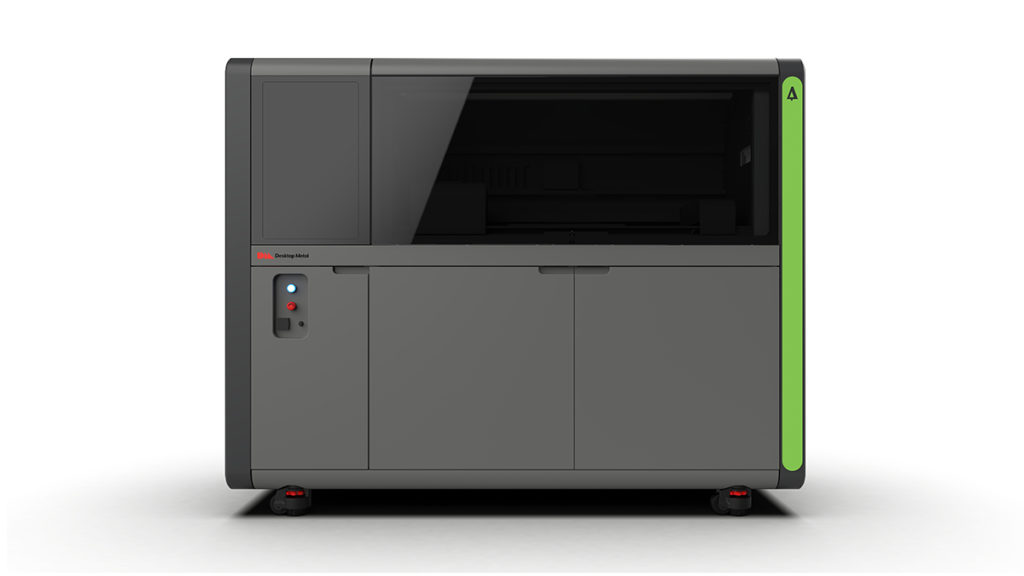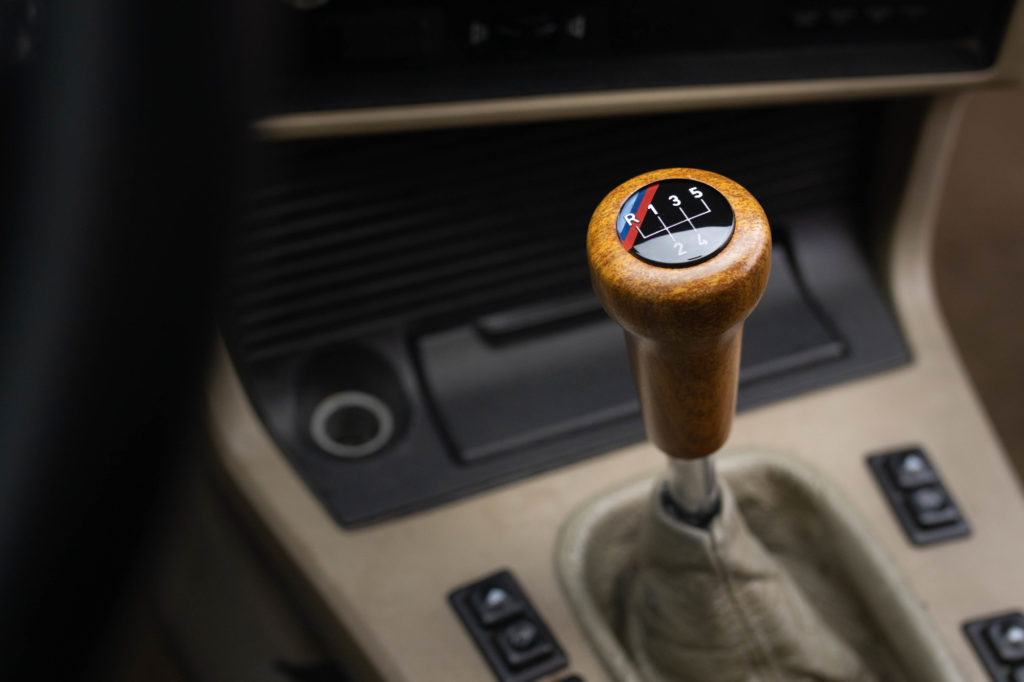With its acquisition of Forust, Desktop Metal (NYSE: DM) opened up a unique world of possibilities for 3D printing wood to the additive manufacturing (AM) industry. After providing wood binder jetting as a specialty service since May 2021, the company is now releasing the technology to the broader public with the commercial release of the Shop System Forust Edition.
With the initial 2021 launch, customers had the opportunity to order custom parts, while Desktop began shipping beta printers. Now, the firm has said that it has refined the process and is shipping turnkey wood printing systems. The first of its kind in the AM sector, the new machine is capable of 3D printing functional, end-use wood parts made from upcycled sawdust from the wood milling industry.
 The Shop System Forust Edition wood binder jet 3D printer. Image courtesy of Desktop Metal.
The Shop System Forust Edition wood binder jet 3D printer. Image courtesy of Desktop Metal.“Our new Shop System Forust Edition makes it easy to create custom and complex wood designs with a 3D printer on demand, circumventing supply chain challenges and delivering all-new design possibilities,” said Ric Fulop, Founder and CEO of Desktop Metal. “One of the great things about binder jet 3D printing technology is it can transform virtually any powder material into functional, end-use parts. Beginning with an ample supply of sawdust byproduct from the traditional wood milling industry, we are using our technology to build cradle-to-cradle manufacturing for wood. We believe this concept has the ability to deliver a meaningful sustainability impact and expand to other powdered waste materials over time.”
 “Designed by London-based studio HagenHinderdael, Cocoon is a decorative pendant light celebrating an innovative way to reduce timber waste. After 3D printing, each piece is carefully hand-stained and finished in a wide variety of wood finishes including natural, oak, teak, and walnut. Cocoon is a brand ambassador for OLED lighting and available for purchase.” Photography by Anders Gramer. Image courtesy of Desktop Metal.
“Designed by London-based studio HagenHinderdael, Cocoon is a decorative pendant light celebrating an innovative way to reduce timber waste. After 3D printing, each piece is carefully hand-stained and finished in a wide variety of wood finishes including natural, oak, teak, and walnut. Cocoon is a brand ambassador for OLED lighting and available for purchase.” Photography by Anders Gramer. Image courtesy of Desktop Metal.Forust 3D Printer Specs
The new machine is built on what is said to be the proven and well-regarded Shop System architecture. With a build volume of 350 x 222 x 200 mm (13.8 x 8.7 x 7.9 in) and a print speed of up to 1,600 cc/hr, the Shop System Forust Edition is able to 3D print roughly 21 mm (0.83 in) in terms of layer height per hour. Using the Fabricate MFG build prep software, users are able to choose from four grain patterns (or a lack of grain altogether) to create parts that mimic ash, mahogany, and other materials.
Similar to other powder-based systems, the printer is accompanied by auxiliary equipment, specifically the Forust Powder Station. This enables users to remove printed parts from the build box and recover loose wood powder for immediate reuse in the printer. For the moment, users will rely on Forust Wood Powder, a specialty blend of raw sawdust from the milling industry that comes from verified and consistent suppliers. However, Desktop is in the process of establishing guidelines that will allow customers to source their own recycled sawdust. Forust Binder, available in clear and brown options, not only binds the wood particles together, but can also be used to create wood grain patterns.
To create durable end parts, the machine comes with a guide for infiltrating printed items with bio-based resins. Once infiltrated, they can be treated like traditional wooden products, meaning that they can be sanded, stained, polished, dyed, coated, refinished, screwed, and nailed.
The Market for 3D Printed Wood
Though the environmental benefits for recycling wood powder is promising, that area of our recycling supply chain is probably among the most developed and, therefore, in less of a need for novel solutions. However, as the world shifts to regional, digital manufacturing, new methods of upcycling are always worth exploring. This is particularly true when it comes to 3D printing wood as an alternative to plastic parts, an area that Desktop is said to be exploring.
 “After 3D printing and infiltration, Forust parts can be sanded, stained, polished, dyed, coated, and refinished in the same manner as traditionally manufactured wood products, offering wide flexibility in end-use parts. Infiltrated Forust parts also have strength similar to traditional wood and can be screwed or nailed.” Image courtesy of Desktop Metal.
“After 3D printing and infiltration, Forust parts can be sanded, stained, polished, dyed, coated, and refinished in the same manner as traditionally manufactured wood products, offering wide flexibility in end-use parts. Infiltrated Forust parts also have strength similar to traditional wood and can be screwed or nailed.” Image courtesy of Desktop Metal.For that reason, the more interesting aspect of this release is the introduction of true wood 3D printing to the AM market. In previous press statements, Desktop Metal has stated that the global finished wood products market is expected to reach $1.8 trillion by 2027. Until now, AM has been unable to tap that immense segment because it has been limited to wood-infused PLA filament.
 A 3D printed shift knob. Image courtesy of Desktop Metal.
A 3D printed shift knob. Image courtesy of Desktop Metal.The potential for 3D printing unique, custom geometries, as well as replacement parts, seems immense. Forust users could feasibly 3D print architectural elements, furniture, home décor, luxury goods, instruments, vehicle components, and more. Unlike traditional wood, Forust parts are also said to be isotropic, meaning that they exhibit the same physical characteristics in all directions. And, because it is a digital process, users that may not have the necessary knowledge of woodworking could take advantage of 3D printing with wood.
Changes in Wood 3D Printing Management
As Desktop Metal launches this truly unique product, one of the original founders and CEO of Forust, Andrew Jeffery, has left the company. Interestingly, a decade ago, Jeffery co-founded Viridis3D, which, through the purchase of EnvisionTEC, is now under Desktop’s umbrella. Its robotic arm platform is the engine behind Desktop Metal’s S-Max Flex sand 3D printer.
After leaving Viridis3D in 2011, Jeffery went on to develop a binder jetting technique for 3D printing ceramics. His ceramic 3D printing startup, Figulo, was purchased by 3D Systems during its acquisition spree under then-CEO Avi Reichental. Then, when Forust was bought by Desktop, Jeffery came full circle, seeing the Viridis3D system used for large-scale wood 3D printing.
The timing of his LinkedIn post announcing his leave one day ago, followed by the news of the Forust Edition 3D printer, seems like it can’t have been coincidental. We’ve reached out to both Jeffery and Desktop Metal to learn about the reason for his departure. Until we receive a reply, the situation is left open for speculation.
One can imagine that he was unhappy with the direction the Forust division was taken or that he may have also been let go as a part of Desktop’s efforts to streamline the firms that it had acquired, the stated reason for the company’s June 2022 layoffs. In all likelihood, Jeffery may have just been ready to move on, with his task as Forust CEO completed with the maturation of the new Shop System.
Wood 3D Printing at Formnext
The news comes as AM companies head to Formnext 2022 in Frankfurt, Germany, November 15-18. The Shop System Forust Edition, now available for purchase internationally, will be on display at the event so that potential customers can learn more.
One week ahead of the event, on November 10, 3DPrint.com, SmarTech Analysis, and Stifel Financial will be hosting AM Investment Strategies 2022, where Desktop Metal CEO Ric Fulop will be participating alongside other 3D printing executives, as well as analysts and financiers, to discuss the economic and funding climate around AM.
Subscribe to Our Email Newsletter
Stay up-to-date on all the latest news from the 3D printing industry and receive information and offers from third party vendors.
Print Services
Upload your 3D Models and get them printed quickly and efficiently.
You May Also Like
Reinventing Reindustrialization: Why NAVWAR Project Manager Spencer Koroly Invented a Made-in-America 3D Printer
It has become virtually impossible to regularly follow additive manufacturing (AM) industry news and not stumble across the term “defense industrial base” (DIB), a concept encompassing all the many diverse...
Inside The Barnes Global Advisors’ Vision for a Stronger AM Ecosystem
As additive manufacturing (AM) continues to revolutionize the industrial landscape, Pittsburgh-based consultancy The Barnes Global Advisors (TBGA) is helping shape what that future looks like. As the largest independent AM...
Ruggedized: How USMC Innovation Officer Matt Pine Navigates 3D Printing in the Military
Disclaimer: Matt Pine’s views are not the views of the Department of Defense nor the U.S. Marine Corps Throughout this decade thus far, the military’s adoption of additive manufacturing (AM)...
U.S. Congress Calls Out 3D Printing in Proposal for Commercial Reserve Manufacturing Network
Last week, the U.S. House of Representatives’ Appropriations Committee moved the FY 2026 defense bill forward to the House floor. Included in the legislation is a $131 million proposal for...

































